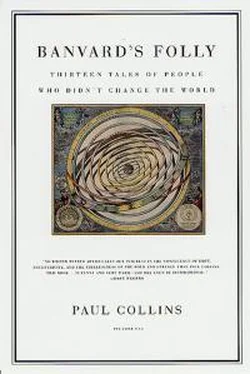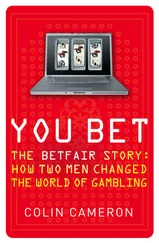This all changed when P. T. Barnum bought out Scudder's American Museum in 1841. Barnum brought in a carnivalesque element of equal parts spectacle and half-believable fraud--a potent and highly salable concoction of freak shows, dioramas, magic acts, natural history, and the sheer unrepentant bravado of acts like Tom Thumb and "George Washington's nursemaid." Barnum was not an infallible entrepreneur, but he was the shrewdest showman that the country had ever produced. Imitators attracted by Barnum's success soon found themselves crushed under the weight of Barnum's one-upmanship and his endless capacity for hyperbolic advertising.
By 1866, Barnum's total ticket sales were greater than the country's population of 35 million. John Banvard, with a castle full of actual artifacts, could scarcely ignore the fortune Barnum was making just a few miles away with objects of much more questionable provenance. Goaded by this, he paid a visit to his old sailing partner William Lillienthal. It had been more than fifteen years since the two had floated down the Nile, collecting the artifacts that now formed the core of Banvard's collection.
With Lillienthal's help--and a lot of investors' money--Banvard was going to take on P. T. Barnum. Their venture was precarious from the start. Aside from the daunting task of challenging America's greatest showman, Banvard was hampered by his own inexperience. Years of panoramic touring and a successful play had convinced Banvard that he could run a museum, but he had never really run a conventional business with a staff and a building to maintain. In all his years as a showman, he'd earned millions with the help of only one assistant, a secretary whom he eventually fired for stealing a few dollars.
Lillienthal and Banvard financed the "Banvard's Museum" by floating a stock offering worth $300,000. In lieu of cash, they paid contractors and artisans with shares of this stock; other shares were bought by some of the most prominent families in Manhattan. There was one problem, though: Banvard had never registered his business or its stock with the state of New York. No share certificates existed for the stock. Unbeknownst to Banvard's backers, and perhaps to Banvard himself, the shares were utterly worthless.
Flush with the money of the unwary, Banvard's Museum raced toward completion.
When the massive forty-thousand-square-foot building opened on June 17, 1867, it was simply the best museum in Manhattan. The famous Mississippi panorama was onstage in a central auditorium that seated two thousand spectators, and there were a number of smaller lecture rooms and displays of Banvard's handpicked collection of antiquities. The lecture rooms were important, as Banvard had invited in student groups for free to emphasize the family-friendly educational qualities of his museum, as opposed to Barnum's sensationalism. The museum also had one genuine crowd-pleaser built right in: ventilation. Poor auditorium ventilation was a constant complaint dogging panoramist shows, and Banvard took the initiative to install louvers and windows all the way around his auditorium.
P. T. Barnum had met a serious challenger in John Banvard. One week after Banvard's opening, Barnum ran ads in the New York Times, crowing that his own museum was "THOROUGHLY VENTILATED! COOL! Delightful!! Cool!!! Elegant, Spacious, and Airy Halls." This was hardly true, of course; Banvard's building was far superior, and Barnum knew it. But Barnum had a grasp of advertising that not even Banvard could match. The rest of the summer was to see America's greatest showmen--and its first entertainment millionaires--locked in an economic struggle to the death.
With each stab at innovation by Banvard, Barnum would parry with inferior copies but superior advertising. Banvard had the Mississippi panorama; Barnum had a Nile panorama, probably copied from Banvard's. Banvard had the real
"Cardiff Man" skeleton; Barnum had a fake. On and on the showmen battled throughout the summer, with the stage and the newspapers as their respective weapons of choice.
The struggle ended with shocking speed. Banvard was in far over his head; creditors were dunning him for payments, and shareholders were furious over the discovery that their stock had been worthless all along. On September 1--scarcely ten weeks after opening--Banvard's Museum padlocked its doors.
Banvard improvised furiously. The building reopened one month later as Banvard's Grand Opera House and Museum. Productions dropped in and out over the next six months--first a leering dance production, then adaptations of Our Mutual Friend and Uncle Tom's Cabin. None was successful. Unable to make anything work, Banvard finally leased out the building to a group of promoters that included--perhaps to his chagrin--P. T. Barnum.
Banvard spent the next decade with the barest grasp on solvency, and then only by quietly appropriating lease money that should have been going to shareholders and other creditors. He and his wife lived virtually alone on their rambling sixty-acre estate; they were down to one servant for the whole property. After his shoddy treatment of the museum backers, no New Yorker would want to invest in a Banvard enterprise now; he wrote two more plays only to find that no producer would take them.
If his financial ethics were suspect, Banvard's artistic integrity was suffering even more. The innovator had been reduced to plagiarism: first in his history book, The Court and Times of George IV, King of England (1875), which was lifted from a book written in 1831; and then again the next year, when he finally managed to write a play that opened in his old museum, now named the New Broadway Theatre. Corrina, A Tale of Sicily was not only plagiarized, it was plagiarized from a living and thoroughly annoyed playwright.
Humiliated and surrounded by creditors, Banvard desperately sought a buyer for his theater. P. T. Barnum, when approached, sent a crushing reply back to his old rival: "No sir!! I would not take the Broadway Theatre as a gift if I had to run it." When Banvard finally did unload his decrepit building in 1879, he had to watch its new owners achieve exactly where he had failed. As Daly's Theatre, the building thrived for decades before finally being torn down in 1920.
Banvard's castle was not to be as long-lived as his museum. Banvard and his wife clung to Glenada for as long as they could, but by 1883, their deep entanglement in bankruptcy forced them to sell it. It eventually fell to the wrecking ball, and virtually all their other possessions were sold off to meet the demands of creditors. But the Mississippi panorama was spared from the auction block--now worn from nearly forty years of use, and nearly forgotten by the public, perhaps it was judged to be worthless anyway.
Banvard and his wife were now both well into their sixties and had scarcely any money to their name. They packed their few remaining belongings and quietly left New York. The only place left for them was what Banvard had left so long ago: the lonely, far-off American frontier. He was returning as he had left, a poor and forgotten painter.
It was a deeply humbled and aged John Banvard that arrived in the frontier town of Watertown, in present-day South Dakota. He and his wife, the recent proprietors of a castle, had been reduced to living in a spare room of their son's house. Eugene Banvard was an attorney with some interest in local public works and construction projects, and occasionally the elder Banvard renewed his energies of yore by pitching in with his son on these projects.
For the most part, though, Banvard retreated into his writing. He was to write about seventeen hundred poems in his life--as many as Emily Dickinson--and like her, he only ever published a few of them. Unlike the more dubious plays and histories that he had "authored," his poems appear to be original to Banvard, and sincere if not particularly innovative efforts. Taking up the pen name "Peter Pallette," Banvard wrote hundreds of poems during his years in Watertown, becoming the state's first published poet. One of Banvard's more sustained efforts, published in Boston back in 1880 as The Origin of the Building of Solomon's Temple, centered on the biblical brothers Ornan and Araunah. It opens with a standard Romantic invocation: I'll tell you a legend, a beautiful
Читать дальше











